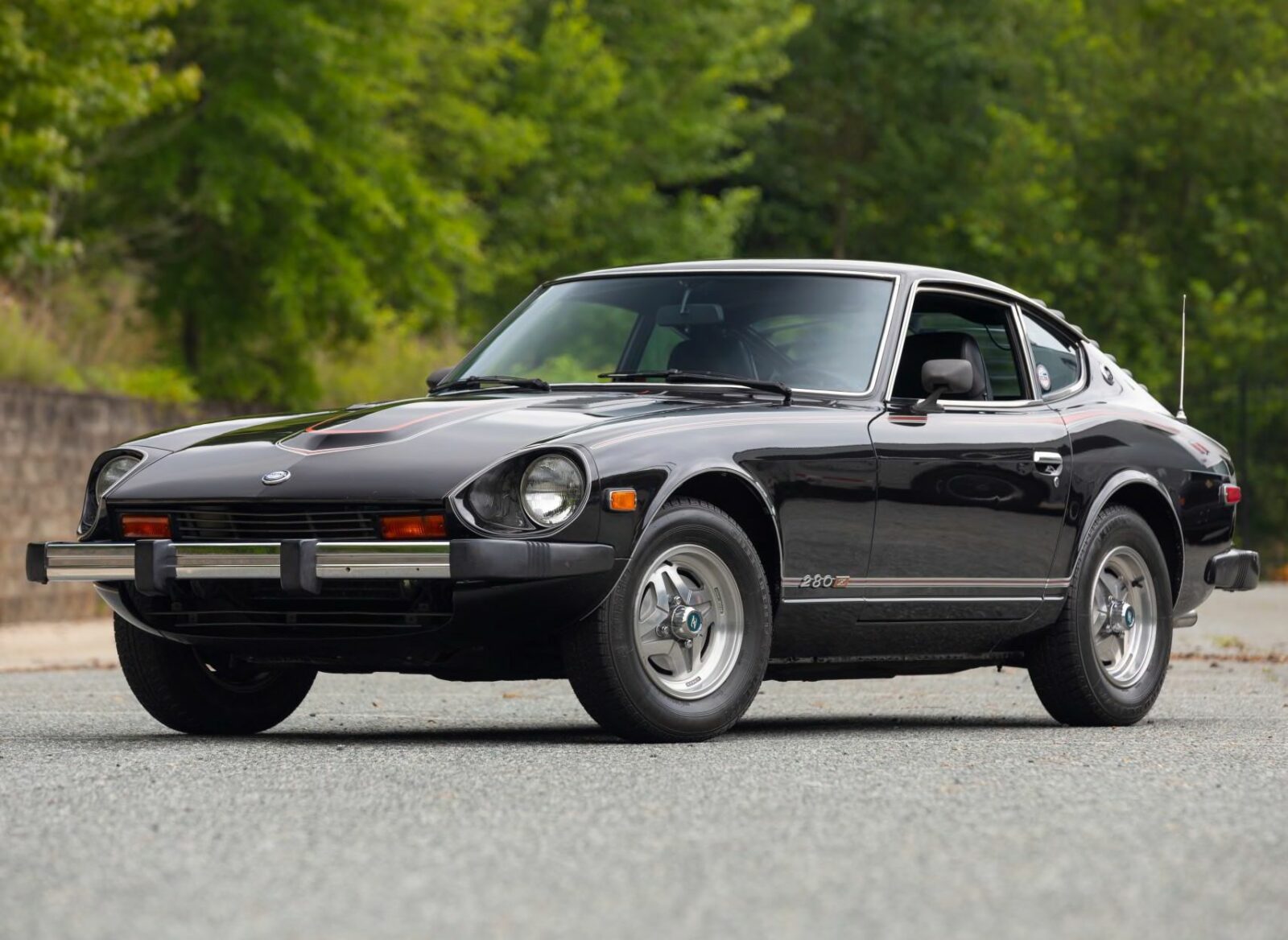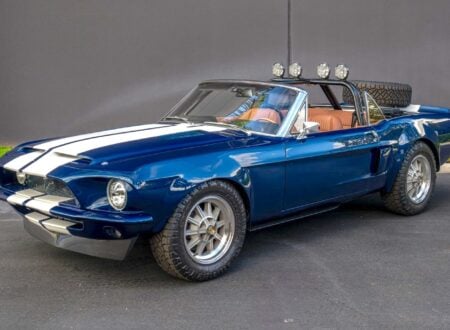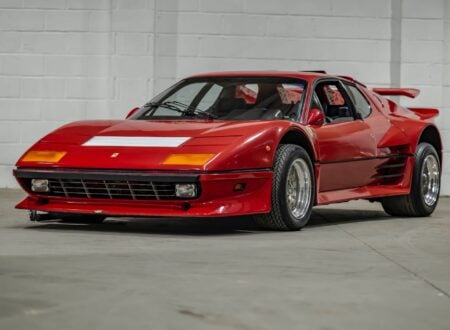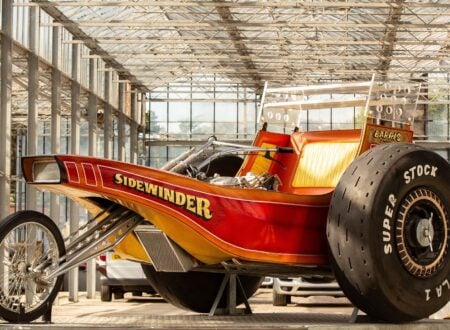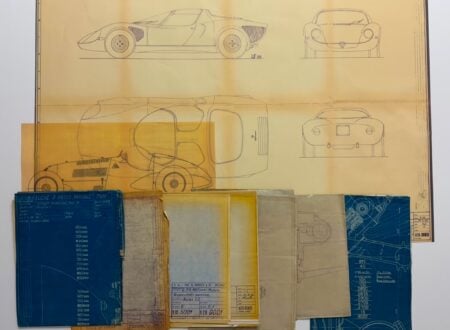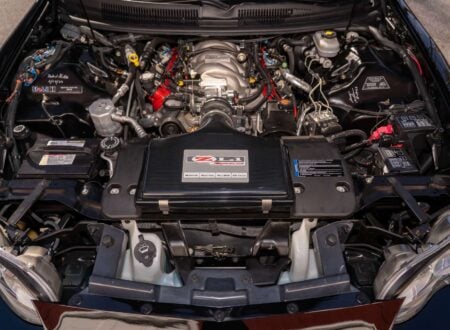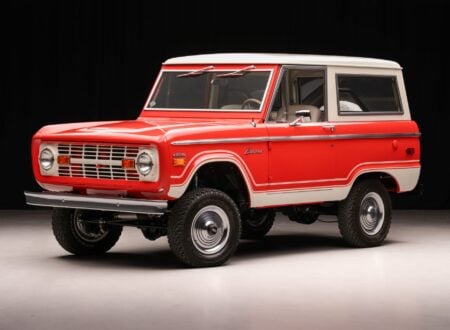This is one of approximately 1,500 examples of the Datsun 280Z “Black Pearl Edition” that were made. It was a special limited edition of the 280Z that was built for the final production year, and it would be the only Datsun Z car to come painted black from the factory.
The development of the Black Pearl Edition had been initiated after the incredible success of the Datsun 280Z “ZZZAP Edition” that had been released in 1977 – interestingly it was almost certainly the first car in history that was co-released with a branded video game to help promote it.
Fast Facts – The Datsun 280Z “Black Pearl Edition”
- The Datsun 280Z would be the final member of the Datsun Z-series that had started with the Datsun 240Z back in 1969. The 240Z would play a pivotal role in popularizing Japanese sports cars in the United States and throughout the western world, before this time Japanese cars had largely been seen as cheap, economical cars at the lower end of the market.
- The 240Z was followed by the 260Z, which was then succeeded by the 280Z. The model number of each car denoted its approximate displacement, the 240Z was 2.4 liters, the 260Z was 2.6 liters, and the 280Z was 2.8 liters. Though there were various upgrades for each generation, the drivetrain, running gear, and sheet metal were all largely the same (or very similar).
- The 280Z was the most powerful of the Z series cars despite increasing emissions restrictions, this was thanks to its larger engine and the introduction of Bosch L-Jetronic electronic fuel injection. Transmission options included a 3-speed automatic, a 4-speed manual, and a 5-speed manual.
- The car you see in this article is a rare “Black Pearl Edition” version of the Datsun 280Z. It’s believed that approximately 1,500 examples were built in in 1978, the final year for the 280Z before it was replaced with the 280 ZX. Interestingly, the Black Pearl Edition would be the first Z series car ever offered in black from the factory.
The Datsun 280Z: A History Speedrun
The Datsun 280Z would be the final car in the original Datsun Z series family that had started with the wildly popular 240Z back in 1969. Also known as the Nissan Fairlady Z, the 240Z is one of the most important Japanese sports cars ever made, as well as one of the most consequential Japanese cars outright.
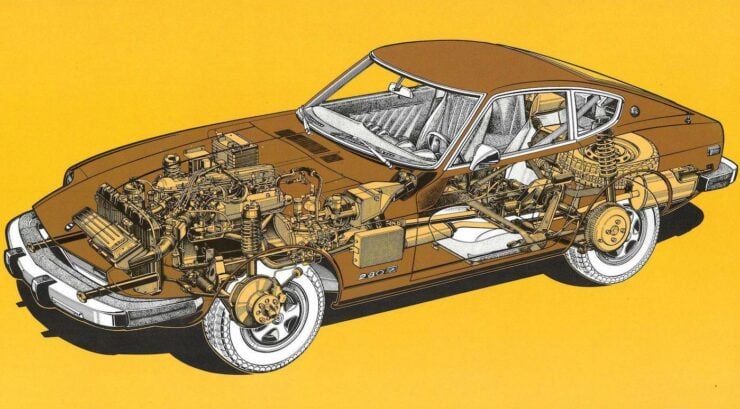

In the 1960s Japanese sports cars were still seen by many in the West as being very cheap, very small, economy cars that were almost disposable. The Datsun 240Z would go a long way towards changing that stereotype.
It offered beautiful styling, class-leading performance, and an affordable price point – it made its competitors like the MGB GT look downright antiquated by comparison. Here was a new sports car with impeccable styling, independent four wheel suspension, sharp handling, and a 2.4 liter straight-six with a single overhead cam offering 151 bhp at 5,600 rpm and 146 lb ft at 4,400 rpm – solid figures for the time.
The strong sales of the 240Z encouraged Nissan to continually develop the model, offering a series of incremental improvements. In 1974 the Datsun 260Z would debut with its new larger 2.6 liter engine, a 2+2 version of the car was also introduced, and both cars offered a slew of other minor upgrades over the earlier 240Z.
The final iteration of the Z series would appear in 1977, the 280Z which had a larger-still 2.8 liter version of the Datsun straight-six. The car included many minor improvements and changes – the most important of which was the introduction of an advanced Bosch L-Jetronic fuel injection system.
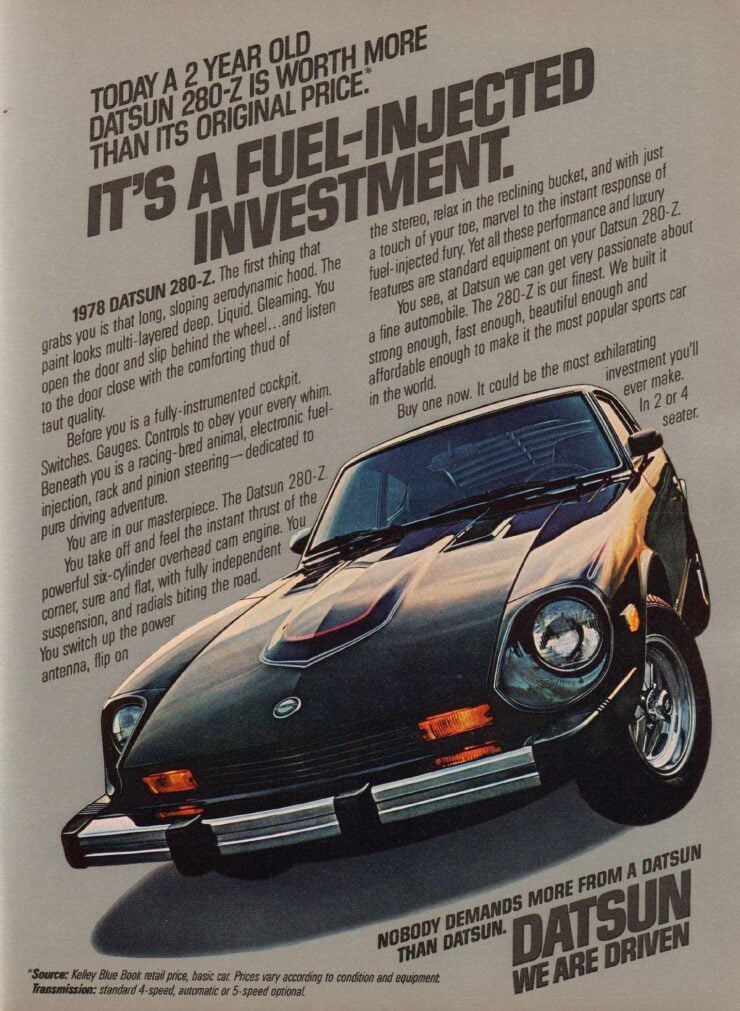

Today the Datsun 280Z represents the pinnacle of Z car evolution before the model series was replaced with the Datsun 280ZX – despite the similar name the 280ZX was a complete redesign that retained only the drivetrain of its predecessor.
The Datsun 280Z “Black Pearl Edition”
Interestingly, Datsun had never offered the 240Z, 260Z, or 280Z with black paint. Black is sometimes seen as unlucky in Japan and it’s associated with death and mourning, this is perhaps one reason that so many early Japanese cars were offered in either white or a series of bold, bright colors.
It’s not known exactly why the color black was chosen, or where the use of the black pearl name for the model came from. Black pearls are seen as a symbol of luxury and mystery due to their rarity and their distinct appearance, they have also been associated with pirate tales and mysterious legends.
Whatever the reason, Nissan settled on the black pearl name and set about creating what would be the very last special edition car from the original Datsun Z series line of cars.
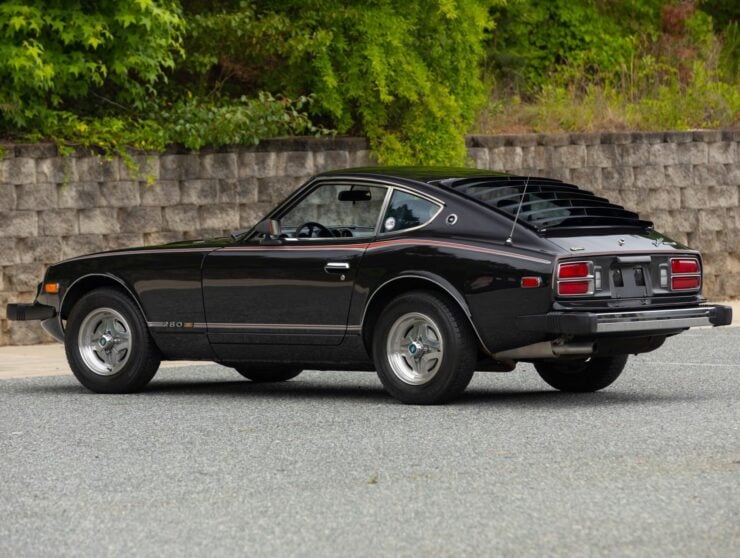

It’s thought that the run away success of the Datsun 280Z “ZZZAP Edition” from 1977 had helped encourage the concept of limited edition models, and much like the ZZZAP Edition, the Black Pearl Edition was centered around a special paint package with bespoke decals.
Each Black Pearl Edition car was finished in Black Pearl Metallic paint, with red and silver stripes down either side and on the hood, twin side mirrors, and louvers over the rear glass. Apparently every Datsun dealer in the United States got at least one car, and there were approximately 850 dealers nationwide at the time.
Interestingly there are no hard numbers on exactly how many Black Pearl Edition cars were made, though it’s believed that around 1,500 were sold, many of which have now been lost to rust, junkyards, and various other misfortunes.
The 1978 Datsun 280Z “Black Pearl Edition” Shown Here
The car you see here is a rare original surviving Black Pearl Edition 280Z. It’s never been restored, it still wears its original paint, and it has just 61,282 miles on the odometer.
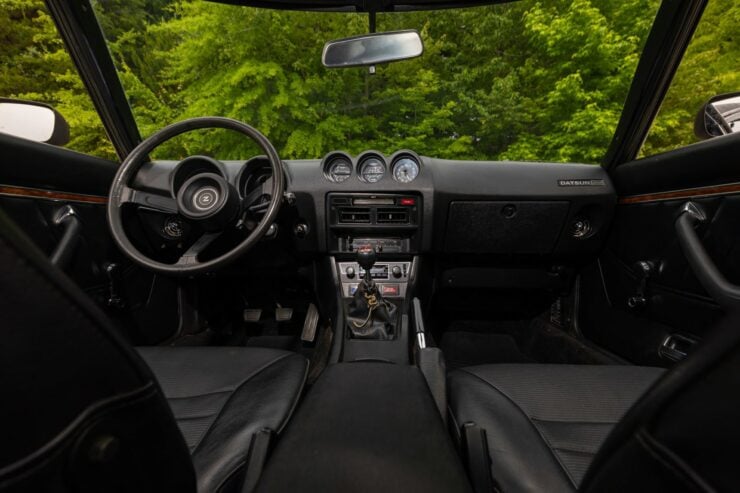

This vehicle is also fitted with the highly desirable 5-speed manual transmission, most 280Zs got either the 3-speed automatic or the 4-speed manual, so collectors are generally willing to pay a price premium for an original five cog.
Mecum will be offering this Black Pearl 280Z in Monterey, California in mid-August with a price guide of $100,000 – $200,000 USD. If you’d like to read more about it or register to bid you can visit the listing here.
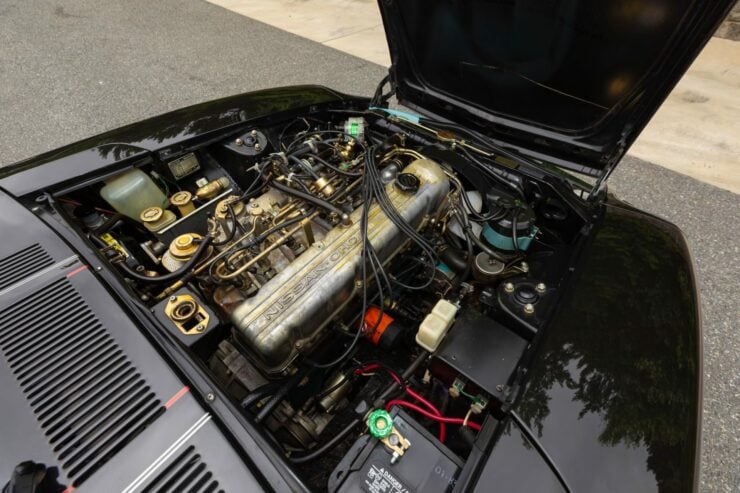
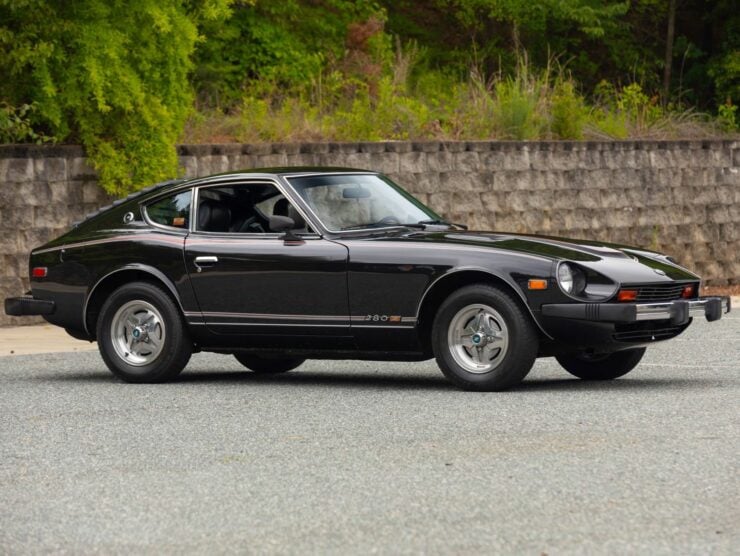
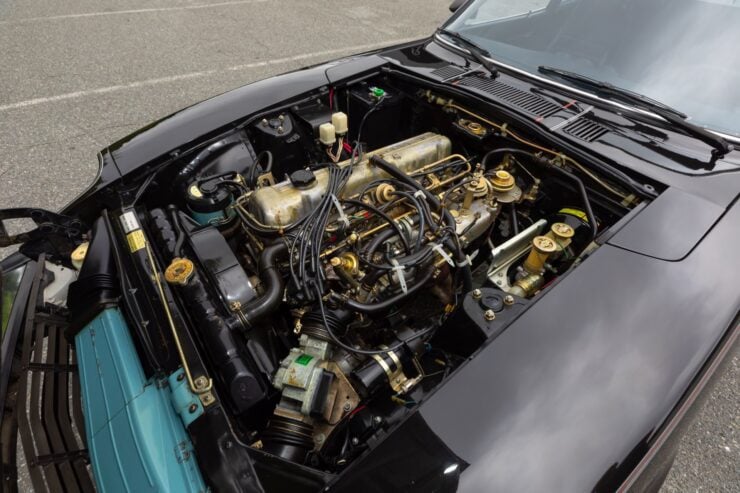
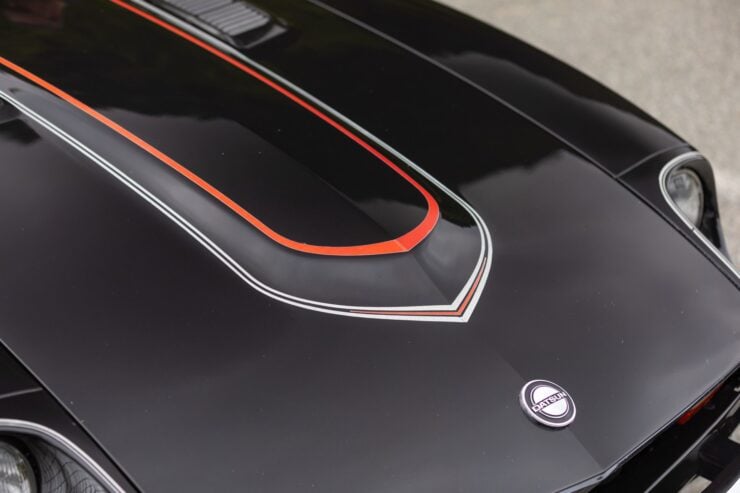
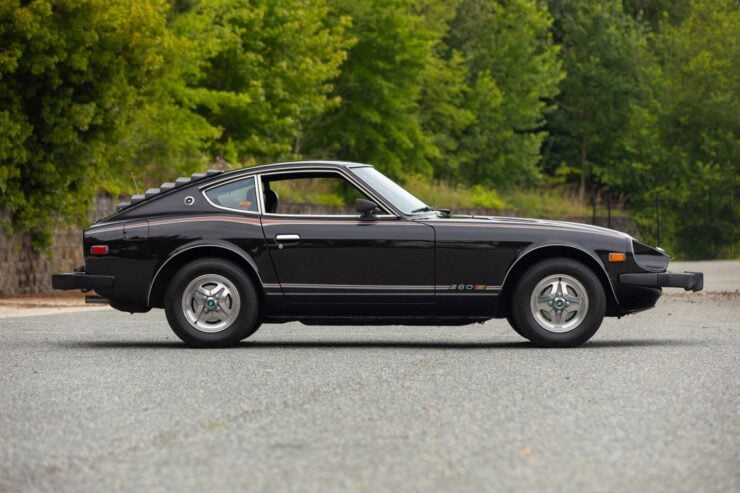
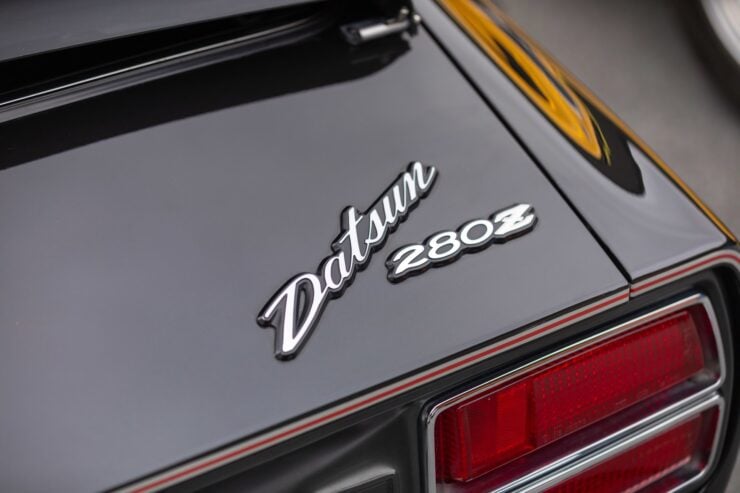
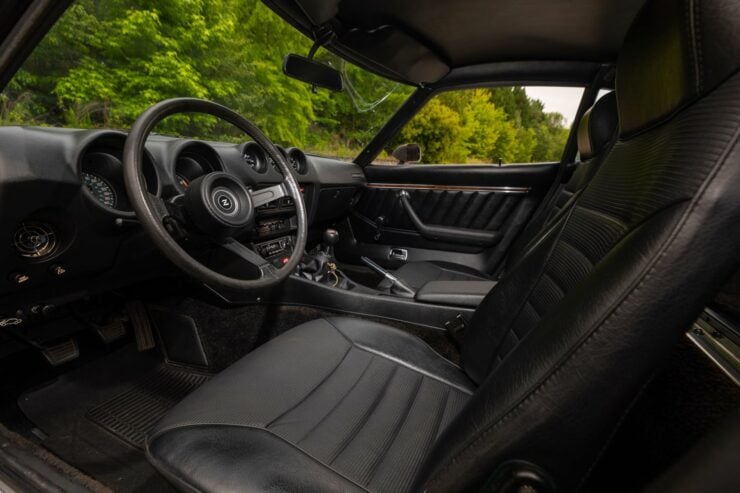
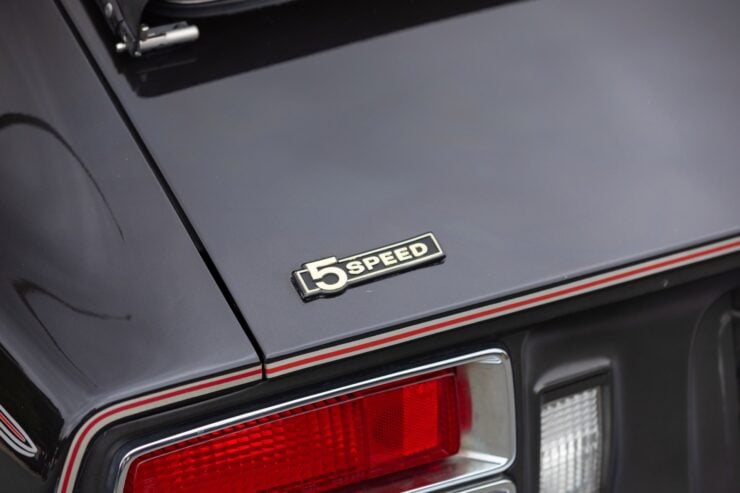
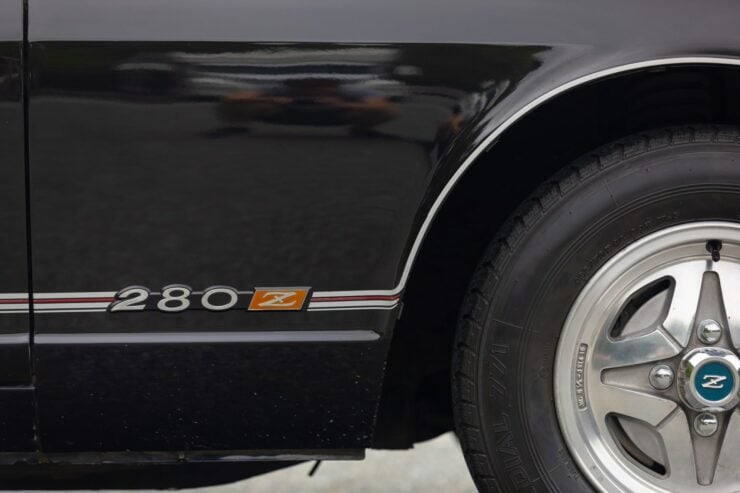
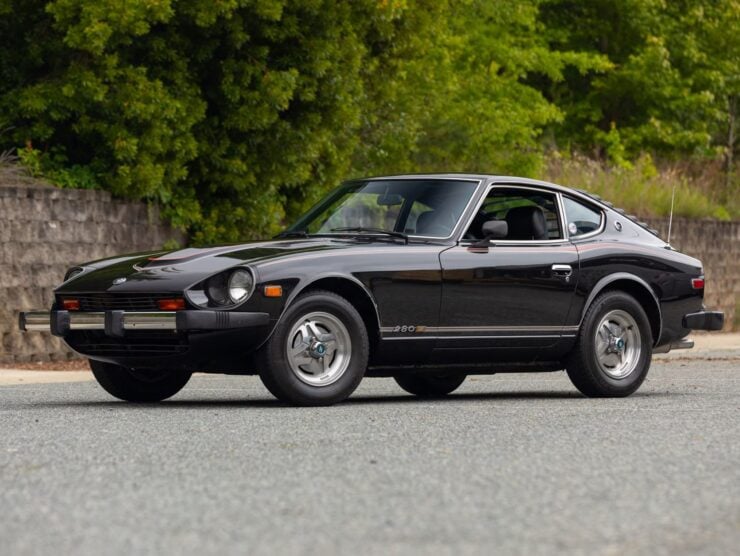
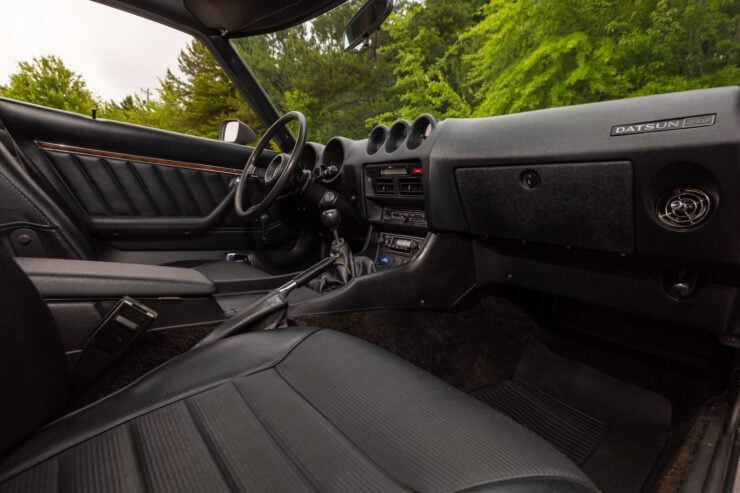
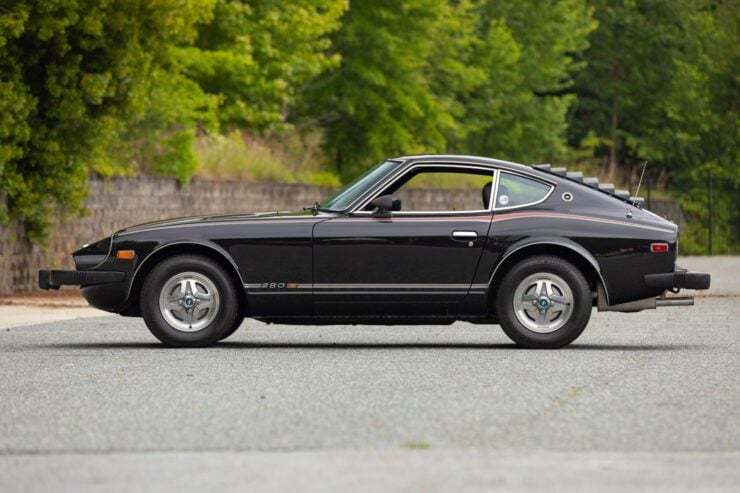
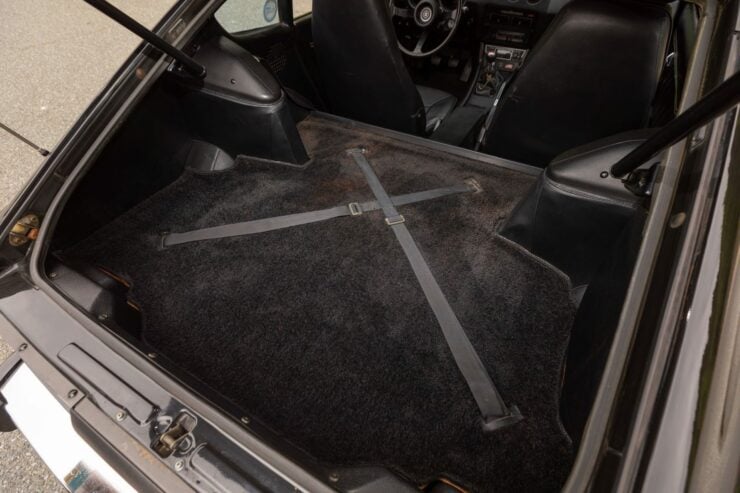
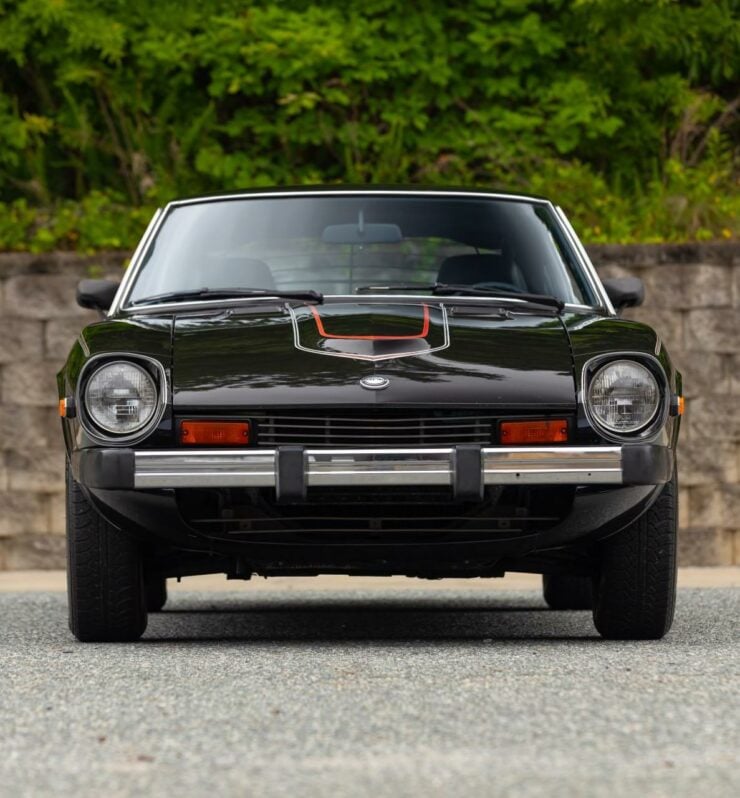
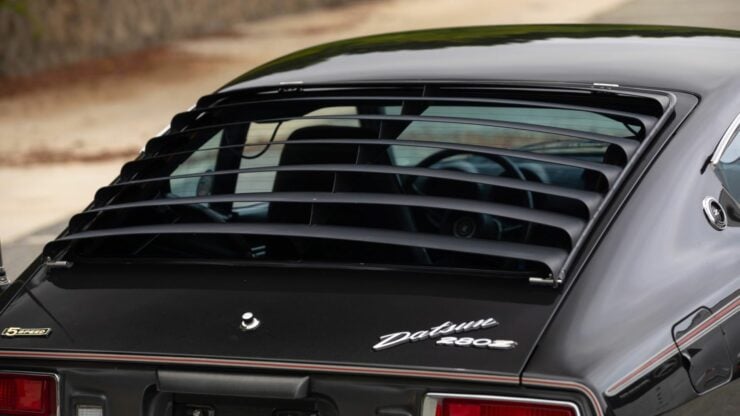
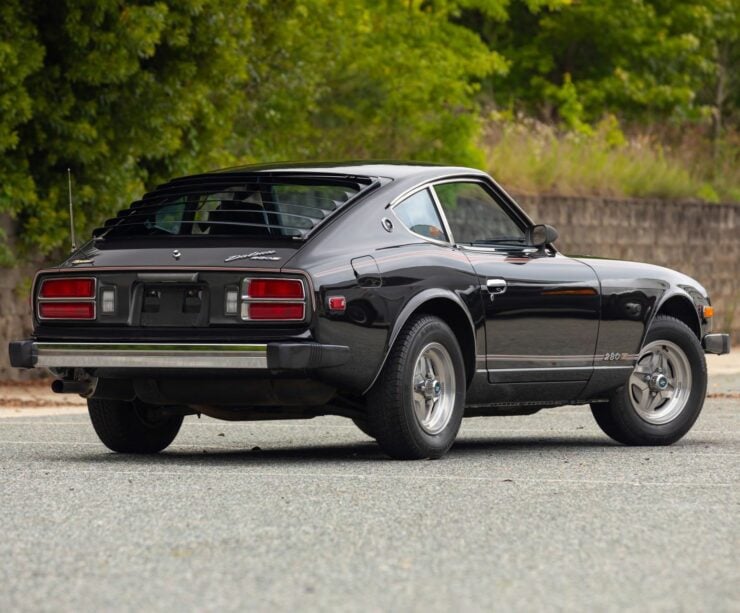
Images courtesy of Mecum

